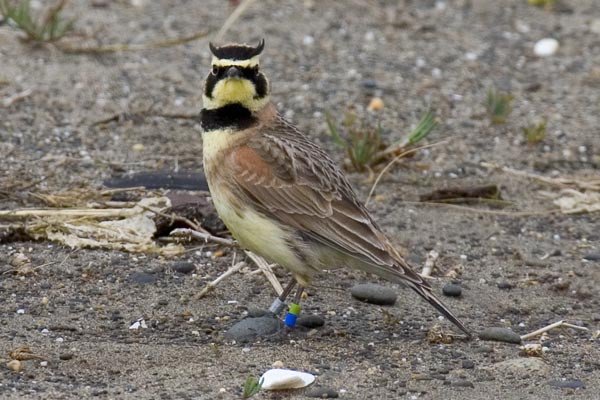Lawsuit seeks to protect few remaining streaked horned larks as endangered

PORTLAND, Ore. (KTVZ) — The Center for Biological Diversity and the Audubon Society of Portland sued the U.S. Fish and Wildlife Service Tuesday to protect streaked horned larks, once-numerous birds found in Washington and Oregon, as endangered.
In April 2022, the Service listed streaked horned larks as threatened instead of endangered, granting the birds fewer protections and leaving them on a path to extinction, the group claimed in a news release, which continues in full below.
Tuesday’s lawsuit challenges this decision and a rule attached to the threatened listing that exempted all agricultural activities from liability under the Endangered Species Act. This rule was enacted despite the fact that crop conversion is one of the leading threats to the rare birds in Oregon’s Willamette Valley.
“Protecting streaked horned larks as endangered is the only way to prevent them from disappearing forever,” said Ryan Shannon, a senior attorney at the Center. “These beautiful birds are at extinction’s doorstep. They need the strongest protections they can get.”
Formerly a common nesting species in prairies west of the Cascade Mountains from southern British Columbia through Washington and Oregon, the larks were so abundant around Puget Sound that they were considered a nuisance by turn-of-the-century golfers. With the conversion of extensive prairies in the Willamette Valley and Puget Lowlands to agricultural fields, floodplain control, and cities, the larks lost most of their habitat; they’ve now dwindled to an estimated 1,170 to 1,610 birds, and possibly far fewer.
Many prairie species are imperiled, but larks are unique in that they need open ground created by floods and fire that have largely disappeared. In the absence of natural short-grass prairie habitats, the birds are now primarily found in anthropogenic ones, including grass seed fields, airports, and bombing ranges on Joint Base Lewis-McChord.
“The weight of scientific evidence clearly points to a bird that should be listed as endangered under the Endangered Species Act,” says Joe Liebezeit, staff scientist and avian conservation manager at Portland Audubon. “We need to give this bird a fighting chance to recover from extinction’s doorstep.”
The Service first listed the larks as threatened with a special rule in 2013. The agency argued that exempting agricultural activities from the Endangered Species Act, regardless of the harm to larks, was necessary to ensure cooperation from farmers and to avoid incentivizing conversion from grass seed to other crops that don’t provide suitable habitat for the larks.
After farmers continued to convert grass seed fields to other crops, the Center successfully challenged the threatened listing in 2019. However, the Service doubled down in 2022 and expanded the exemption to include Washington even though grass seed is not commonly grown in the state. In its finding the Service acknowledged that the conversion of grass seed to other crops, which don’t support larks, continues.
Streaked horned larks are small, ground-dwelling songbirds with conspicuous feather tufts, or “horns,” on their heads. Generally pale brown with yellow washes in the male’s face, adults have a black bib, black whisker marks, and black tail feathers with white margins in addition to its “horns.”
They are part of a growing list of species that are imperiled by loss of prairies in the Willamette Valley and Puget Trough to urban and agricultural sprawl. These species include Fender's blue butterflies, Taylor's checkerspot butterflies, Willamette daisies and Kincaid's lupines.